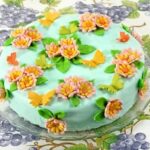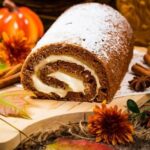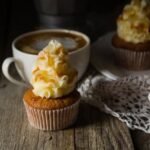Have you ever wondered how to decorate a cake with icing to make it look as beautiful as it tastes? Cake decorating is an art form that can seem daunting, but with the right guidance and techniques, anyone can create stunning designs. In this article, we will provide an overview of the basics of cake decorating with icing, covering everything from understanding different types of icing to mastering piping techniques and troubleshooting common issues.
When it comes to decorating a cake with icing, there are various techniques and tools that can be used to achieve different effects. From simple designs to intricate patterns, the possibilities are endless. Whether you are a beginner or looking to enhance your skills, learning the fundamentals of cake decorating with icing is essential for creating visually appealing and professional-looking cakes.
In this comprehensive guide, we will explore the different types of icing including buttercream, royal icing, fondant, and more. We will also cover the essential tools and equipment needed for decorating a cake with icing, as well as provide step-by-step instructions on crumb coating and leveling the cake. By the end of this article, you will have a solid foundation in cake decorating with icing and be ready to create your own masterpiece.
Understanding Different Types of Icing
When it comes to decorating a cake with icing, it’s important to understand the different types of icing available and how they can be used to achieve various designs and effects. Here is an overview of the most commonly used icings:
1. Buttercream: This classic icing is made from butter, powdered sugar, and flavorings. It’s versatile, easy to work with, and can be used for everything from simple borders to intricate piping designs.
2. Royal Icing: Made from egg whites or meringue powder and powdered sugar, royal icing dries hard and is commonly used for creating detailed decorations like flowers and lace patterns.
3. Fondant: This smooth, pliable icing is rolled out and draped over the cake for a flawless finish. It’s ideal for creating sharp edges and sculpting elaborate cake decorations.
4. Ganache: A rich mixture of chocolate and cream, ganache can be used as a filling or frosting for cakes. It can also be poured over cakes for a smooth, glossy finish.
Each type of icing has its own unique qualities and uses in cake decorating. By understanding the characteristics of each one, you can choose the right type of icing for your specific design needs.
In order to properly decorate a cake with icing, it’s essential to have the right tools and equipment on hand. For basic icing techniques such as spreading and smoothing buttercream or royal icing onto a cake, you will need offset spatulas in various sizes. Piping bags and tips are essential for creating intricate designs with buttercream or royal icing piping techniques.
And if you plan to work with fondant, a rolling pin specifically designed for fondant work will be necessary. Additionally, investing in quality food coloring gels that won’t alter the consistency of your icings will help achieve vibrant colors without compromising texture when decorating your cake with icing.
Essential Tools and Equipment for Decorating a Cake With Icing
When it comes to decorating a cake with icing, having the right tools and equipment is essential for achieving professional-looking results. From basic essentials to specialized items, having the proper equipment can make all the difference in how your finished cake looks. Here are some of the essential tools and equipment you will need when decorating a cake with icing.
First and foremost, you will need a good offset spatula for spreading and smoothing icing on the cake. This tool is essential for creating a flawless finish on the surface of your cake. Additionally, a bench scraper is useful for achieving clean and sharp edges on your cake, especially when working with buttercream or fondant.
Piping bags and various piping tips are also crucial for creating intricate designs and borders on your cake. Whether you’re using buttercream or royal icing, having a variety of piping tips will allow you to create different textures and patterns. And don’t forget about a turntable – this handy tool makes it easier to evenly coat the sides of your cake with icing, as well as allowing you to smoothly spin the cake as you decorate.
Finally, investing in a good quality cake leveler or serrated knife is important for ensuring that your layers are even and level before proceeding with icing. Uneven layers can result in a lopsided or unstable finished product, so taking the time to level your cakes properly is key to successful icing and decorating.
| Essential Tools | Equipment |
|---|---|
| Offset spatula | Piping bags |
| Bench scraper | Piping tips |
| Turntable | Cake leveler/ serrated knife |
Step-by-Step Guide to Crumb Coating and Leveling the Cake
When it comes to decorating a cake with icing, one of the essential steps is crumb coating and leveling the cake. This step ensures that your final icing layer is smooth and free from any loose crumbs, resulting in a professional-looking finish. To start, make sure you have a leveled cake to work with. If necessary, use a serrated knife or cake leveler to trim the top of the cake to create an even surface.
Next, prepare a batch of buttercream icing and thin it out slightly with a bit of milk or water. This will make it easier to spread over the cake without tearing the delicate crumbs.
Using an offset spatula, apply a thin layer of icing all over the cake, sealing in any crumbs that may come loose during the process. This initial coat is called the crumb coat and should be allowed to set slightly before applying the final layer of icing.
Once the crumb coat has set, you can proceed with adding the final layer of icing to your cake. Use smooth, even strokes with your offset spatula to achieve a clean finish. If desired, you can also use a bench scraper for a more polished look.
Remember that practice makes perfect when it comes to achieving smooth and level icing on your cakes. With time and experience, you’ll be able to master this essential skill for beautifully decorated cakes using icing.
Mastering Piping Techniques for Intricate Designs and Borders
Piping techniques are essential skills for any cake decorator looking to create intricate designs and borders with icing. Whether you’re a beginner or an experienced baker, mastering these techniques can take your cake decorating to the next level. In this section, we will explore the various piping tips and methods used to achieve beautiful designs and borders on cakes.
Choosing the Right Piping Tips
When it comes to piping, the type of tip you use can make a significant difference in the outcome of your design. There are numerous piping tips available, each designed to create different shapes and patterns. Round tips are great for creating outlines and writing, while star tips can produce beautiful rosettes and swirls.
Leaf tips are ideal for adding foliage or floral accents to your cakes. Understanding the function of each piping tip is crucial in achieving the desired design.
Techniques for Piping Intricate Designs
Before you begin piping intricate designs on your cake, it’s important to practice on a flat surface to get a feel for the pressure needed to create clean lines and shapes. When working on the cake, hold the piping bag at a 45-degree angle and apply even pressure as you guide the tip along the surface.
Creating consistent pressure is key to maintaining uniformity in your design. Practice simple shapes such as dots, lines, and swirls before moving on to more complex patterns.
Creating Beautiful Borders With Piping
Borders can add a finishing touch to your cake design, and there are numerous ways to pipe decorative borders using different tips and techniques. A simple shell border can be achieved by applying steady pressure while swirling the piping bag in a circular motion. Ruffle borders can be created by gently squeezing and releasing pressure as you move along the edge of the cake. Experiment with different tips and motions to find the perfect border for your cake.
Mastering piping techniques for intricate designs and borders takes time and practice, but with patience and dedication, you can elevate your cake decorating skills significantly. Whether you’re adding delicate lace-like details or bold geometric patterns, understanding how to decorate a cake with icing through piping will allow you to unleash your creativity and impress friends and clients alike.
Creating Texture and Dimension With Icing
Using Different Piping Tips for Texture
One of the easiest ways to create texture with icing is by using different piping tips. A star tip, for example, can create a lovely textured effect for borders and rosettes, while a round tip can be used for creating smooth dots or decorative lines. Experimenting with various piping tips will allow you to create a variety of textures on your cakes.
Adding Dimension With Layering
Layering different colors and types of icing can also add dimension to your cake designs. For example, using a lighter shade of icing as a base layer before adding a darker shade on top can create a beautiful ombré effect. Additionally, using different consistencies of icing, such as stiff and soft peaks, can add visual interest and depth to your decorations.
Texturing Techniques
There are various techniques you can use to add texture to your icing decorations. For example, using a small offset spatula or the back of a spoon to create gentle swirls and waves in buttercream icing can add an elegant touch to your cakes. You can also experiment with stencils, impression mats, or even edible lace to create intricate textures on your cakes.
By incorporating these tips and tricks into your cake decorating repertoire, you’ll be able to elevate your designs with visually stunning textures and dimensions that are sure to impress any audience. Mastering the art of creating texture and dimension with icing will take practice and patience but the end result will be well worth the effort.
Using Colors and Flavors to Enhance the Visual Appeal of the Cake
When it comes to decorating a cake with icing, using colors and flavors can make a huge difference in the visual appeal of the final product. Choosing the right colors and flavors for your icing can take your cake from ordinary to extraordinary. One popular way to add color and flavor to icing is by using food coloring and flavored extracts.
For adding color to your icing, gel food coloring is highly recommended as it produces more vibrant and intense colors compared to liquid food coloring. Start with a small amount and gradually add more until you achieve the desired shade. For flavored icing, consider using extracts such as vanilla, almond, or citrus to infuse your icing with delicious flavors that complement the cake.
Another fun way to enhance the visual appeal of your cake is by using different techniques such as marbling, ombre, or watercolor effects with your icing. These techniques can create stunning visual effects that will impress anyone who sees or tastes the cake. Additionally, consider incorporating edible decorations such as sprinkles, edible glitter, or fondant shapes to add another layer of visual interest to your cake.
Incorporating colors and flavors into your cake decorating process can truly elevate the overall look and taste of your creation. Experiment with different combinations and techniques to find what works best for you and suits the theme or occasion for which you are decorating the cake.
| Using Colors in Icing | Enhancing Visual Appeal |
|---|---|
| Start with a small amount of gel food coloring | Consider incorporating edible decorations |
| To infuse your icing with delicious flavors use extracts such as vanilla, almond or citrus. | Experiment with different combinations and techniques |
Advanced Techniques
When it comes to achieving a professional look for your cakes, advanced techniques such as fondant sculpting and airbrushing can take your cake decorating skills to the next level. Fondant sculpting allows for intricate and customizable designs that are sure to impress any audience, while airbrushing offers a seamless and artistic finish to your creations.
Fondant sculpting involves using a pliable icing made from sugar, water, and other ingredients to create decorative shapes, figures, and patterns. To start, you will need fondant, which can be purchased pre-made or homemade using marshmallows and powdered sugar. You will also need sculpting tools such as shaping tools, cutters, and impression mats to mold the fondant into the desired shapes and textures.
Airbrushing is another advanced technique that allows for even and vibrant colors on your cakes. With an airbrush gun and edible food coloring, you can create beautiful gradients, shading, and intricate designs on your cakes. It’s important to practice controlling the pressure and distance of the airbrush gun to achieve the desired effect without oversaturating or creating streaks.
Both fondant sculpting and airbrushing require patience, practice, and attention to detail. It’s essential to familiarize yourself with different techniques through tutorials, classes, or trial-and-error experimentation. With dedication and perseverance, you can master these advanced techniques for professional-looking cakes that are sure to leave a lasting impression.
Incorporating fondant sculpting and airbrushing into your cake decorating repertoire will open up a world of creative possibilities for your confectionery creations. Whether you’re crafting lifelike floral arrangements or seamlessly blending colors for an ombre effect, these techniques will elevate your cakes from ordinary to extraordinary. With practice and perseverance, you can become proficient in both fondant sculpting and airbrushing for visually stunning results that will impress clients, friends, and family alike.
Troubleshooting Common Issues in Cake Decorating With Icing
In conclusion, decorating a cake with icing can be a fun and rewarding experience, but it does require some patience and practice. Understanding the different types of icing, essential tools and equipment, as well as mastering piping techniques are all vital components to creating a beautifully decorated cake.
The step-by-step guide to crumb coating and leveling the cake is crucial for achieving a smooth surface for your decorations. Additionally, knowing how to troubleshoot common issues such as cracks, air bubbles, and mastering smoothing techniques will help you create professional-looking cakes every time.
One of the most important aspects of decorating a cake with icing is mastering piping techniques for intricate designs and borders. Practicing different piping tips and experimenting with various patterns will help you enhance the visual appeal of your cakes. Using colors and flavors creatively can also elevate your cake decorating skills to the next level, allowing you to create visually stunning masterpieces that are just as delicious as they look.
For those looking to take their cake decorating skills even further, advanced techniques such as fondant sculpting and airbrushing can add a professional touch to your creations. With dedication and continuous practice, anyone can learn how to decorate a cake with icing like a pro. So whether you’re a beginner or have been decorating cakes for years, there’s always something new to learn in the world of cake decorating with icing.
Frequently Asked Questions
What Is the Best Way to Put Icing on a Cake?
The best way to put icing on a cake is to start with a crumb coat to seal in any loose crumbs, then apply a thicker layer of icing and use a spatula or icing smoother to create an even surface.
How to Easily Decorate a Cake?
Decorating a cake can be made easy by using piping bags and various tips to create different designs like rosettes, swirls, or borders. Adding edible decorations like flowers or sprinkles can also enhance the cake’s appearance.
How Do You Stick Icing to a Cake?
To stick icing to a cake, ensure that the cake is completely cooled before applying the icing. It’s also helpful to gently press the icing onto the cake’s surface and smooth it out to help it adhere properly. Using a light syrup or apricot glaze can also help the icing stick securely.

Welcome to our cake decorating blog! My name is Destiny Flores, and I am the proud owner of a cake decorating business named Cake Karma. Our mission is to provide delicious, beautiful cakes for all occasions. We specialize in creating custom cakes that are tailored specifically to each customer’s individual needs and tastes.





